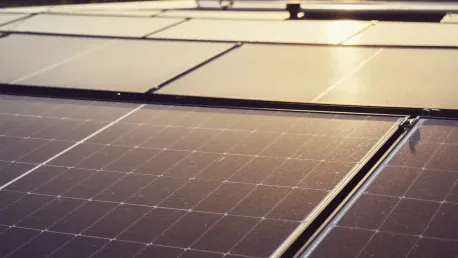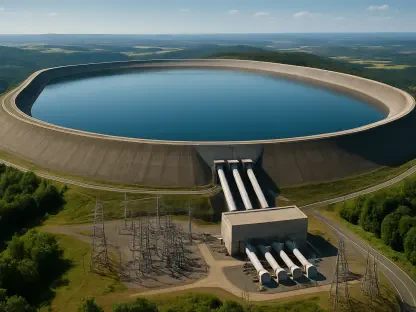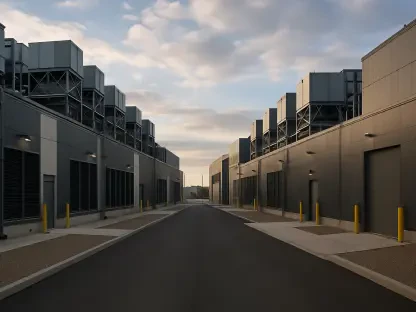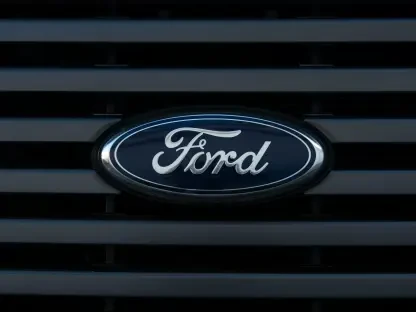In an innovative move demonstrating a commitment to sustainability and cost efficiency, Chick-fil-A has rolled out solar-powered microgrids across three pilot locations. The latest project, completed at the Oceanside restaurant, marks the culmination of a series of initiatives aimed at integrating renewable energy sources into the fast-food chain’s operations. This shift positions Chick-fil-A as the first quick-service restaurant chain in the United States to deploy such advanced technology, reflecting a broader trend within the industry to embrace environmentally friendly practices.
Innovative Energy Solutions
The Oceanside microgrid is equipped with an 81 kWh battery energy storage system (BESS) and a 112 kW solar array that encompasses both canopy- and ground-mounted modules. The unique terrain of this location presented a challenge, necessitating the use of ground screws in place of the typical concrete-poured footings to secure the installation. This meticulous adjustment showcases the adaptability required to meet site-specific conditions while still striving to achieve significant energy cost savings and operational efficiency.
This ambitious project aims to cover approximately one-third of the restaurant’s annual energy consumption while offering a 10% cost reduction compared to traditional grid power. The implementation has been streamlined through an energy-as-a-service (EaaS) agreement with SolMicroGrid, which manages the entire process—from installation to financing. This arrangement relieves Chick-fil-A from requiring upfront capital investment, offering a financially viable pathway to integrate renewable energy through a subscription or pay-per-use model.
Peak Load Shaving and Energy Efficiency
One of the significant benefits of adopting microgrid technology is its capability to manage peak load shaving. This process reduces electricity costs during high-demand periods, such as early mornings when restaurant appliances are switched on simultaneously. The Stockton, California location exemplifies the positive outcomes of this approach, reporting a 10% reduction in overall power costs and a contribution of 38% clean energy to Chick-fil-A’s overall energy portfolio.
Each pilot location has been tailored to its specific regional conditions and energy requirements. For instance, the Oceanside site benefits from the abundant sunlight in San Diego Gas & Electric’s service territory. Unlike the previous installations in Stockton and Santa Rosa, the Oceanside microgrid does not include a natural gas generator, relying solely on renewable energy sources. The battery energy storage system at this location is also the largest among the three pilot projects, highlighting the scalability and potential of such systems.
Evaluating and Expanding the Initiative
The primary objective of these pilot projects is to gather comprehensive data over the span of six months to a year. This data will be crucial in evaluating system efficiency, cost savings, and overall resilience. By thoroughly analyzing the performance metrics from these initial deployments, Chick-fil-A aims to develop a robust blueprint for expanding microgrid implementation to additional locations. This data-driven approach ensures that future installations are optimized for maximum benefit.
This initiative mirrors a growing trend among fast-food chains to adopt sustainable practices that not only reduce operational costs but also lessen the environmental impact. McDonald’s and Wendy’s have also ventured into substantial solar energy projects, signifying a broader industry shift towards renewable energy solutions. These efforts align with global sustainability goals and demonstrate that substantial energy cost savings can be achieved alongside environmental stewardship.
Towards a Sustainable Future
In a groundbreaking move showcasing its dedication to sustainability and cost-efficiency, Chick-fil-A has introduced solar-powered microgrids at three pilot locations. The most recent installation, completed at their Oceanside restaurant, represents the culmination of various initiatives aimed at incorporating renewable energy into the brand’s operations. This strategic shift makes Chick-fil-A the first quick-service restaurant chain in the U.S. to implement such sophisticated technology, signaling a growing trend within the fast-food industry to adopt eco-friendly practices. By transitioning to solar power, Chick-fil-A not only reduces its carbon footprint but also sets a new standard for other restaurants to follow. This initiative reflects a broader commitment to environmental stewardship and highlights a strategic effort to leverage renewable energy, potentially influencing the entire sector to prioritize sustainability.









